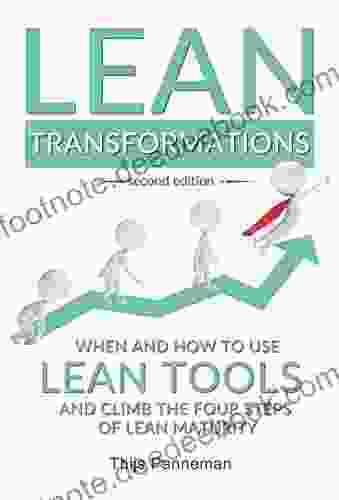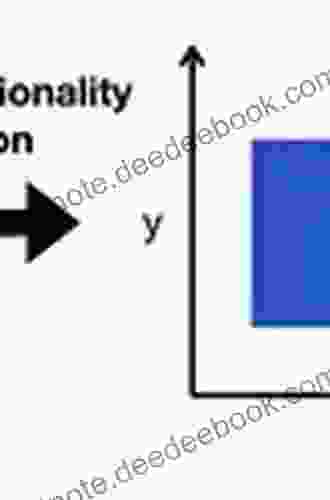An Empirical Approach to Dimensionality Reduction and the Study of Patterns

Dimensionality reduction is a technique that can be used to reduce the number of features in a data set while preserving as much information as possible. This can be useful for a variety of reasons, such as improving the performance of machine learning algorithms, making data more interpretable, and visualizing data in a lower-dimensional space.
5 out of 5
| Language | : | English |
| File size | : | 7074 KB |
| Text-to-Speech | : | Enabled |
| Print length | : | 325 pages |
| Lending | : | Enabled |
There are a variety of different dimensionality reduction techniques available, each with its own strengths and weaknesses. In this article, we will discuss one of the most popular dimensionality reduction techniques, principal component analysis (PCA),and provide an empirical example of how it can be used to reduce the dimensionality of a data set and study patterns in the data.
Principal Component Analysis (PCA)
PCA is a linear transformation that can be used to reduce the dimensionality of a data set. It works by finding a set of new features that are linear combinations of the original features, and that capture as much of the variance in the data as possible. The first principal component is the linear combination of the original features that captures the most variance, the second principal component is the linear combination of the original features that captures the second most variance, and so on.
PCA can be used for a variety of purposes, including:
- Improving the performance of machine learning algorithms
- Making data more interpretable
- Visualizing data in a lower-dimensional space
An Empirical Example
In this section, we will provide an empirical example of how PCA can be used to reduce the dimensionality of a data set and study patterns in the data.
We will use the Iris data set, which is a collection of data on the sepal length, sepal width, petal length, and petal width of 150 iris flowers. We will use PCA to reduce the dimensionality of the data set to two dimensions, and then we will plot the data points in the two-dimensional space.
The following code shows how to perform PCA on the Iris data set using the scikit-learn library:
python from sklearn.decomposition import PCA
# Load the Iris data set iris = datasets.load_iris()
# Create a PCA object pca = PCA(n_components=2)
# Fit the PCA object to the data pca.fit(iris.data)
# Transform the data using the PCA object iris_pca = pca.transform(iris.data)
# Plot the data points in the two-dimensional space plt.scatter(iris_pca[:, 0], iris_pca[:, 1], c=iris.target) plt.show()
The output of the code is a plot of the data points in the two-dimensional space. The plot shows that the data points are clustered into three groups, which correspond to the three different species of iris flowers. This suggests that the first two principal components capture the most important patterns in the data set.
PCA is a powerful dimensionality reduction technique that can be used to improve the performance of machine learning algorithms, make data more interpretable, and visualize data in a lower-dimensional space. In this article, we provided an empirical example of how PCA can be used to reduce the dimensionality of a data set and study patterns in the data.
We encourage you to experiment with PCA and other dimensionality reduction techniques to see how they can help you improve your machine learning projects.
References
[1] Jolliffe, I. T. (2002). Principal component analysis. John Wiley & Sons. [2] Hastie, T., Tibshirani, R., & Friedman, J. (2009). The elements of statistical learning. Springer Science & Business Media.
5 out of 5
| Language | : | English |
| File size | : | 7074 KB |
| Text-to-Speech | : | Enabled |
| Print length | : | 325 pages |
| Lending | : | Enabled |
Do you want to contribute by writing guest posts on this blog?
Please contact us and send us a resume of previous articles that you have written.
 Book
Book Page
Page Chapter
Chapter Story
Story Library
Library Paperback
Paperback Newspaper
Newspaper Shelf
Shelf Glossary
Glossary Bibliography
Bibliography Synopsis
Synopsis Manuscript
Manuscript Scroll
Scroll Classics
Classics Library card
Library card Narrative
Narrative Biography
Biography Autobiography
Autobiography Memoir
Memoir Encyclopedia
Encyclopedia Narrator
Narrator Character
Character Resolution
Resolution Librarian
Librarian Catalog
Catalog Card Catalog
Card Catalog Archives
Archives Periodicals
Periodicals Research
Research Lending
Lending Reserve
Reserve Academic
Academic Special Collections
Special Collections Literacy
Literacy Thesis
Thesis Dissertation
Dissertation Storytelling
Storytelling Awards
Awards Reading List
Reading List Book Club
Book Club Fleur Hitchcock
Fleur Hitchcock Carole Anne Carr
Carole Anne Carr Walter Daelemans
Walter Daelemans Jim Ruland
Jim Ruland Ralph Van Deman Magoffin
Ralph Van Deman Magoffin Stan Lee
Stan Lee Lynette Noni
Lynette Noni Tea Krulos
Tea Krulos Joos Korstanje
Joos Korstanje D Sundararajan
D Sundararajan Vicar Sayeedi
Vicar Sayeedi Kimberly Willis Holt
Kimberly Willis Holt Michael Fry
Michael Fry Haywood Smith
Haywood Smith Rich Bradwell
Rich Bradwell Arthur Rackham
Arthur Rackham Elizabeth Partridge
Elizabeth Partridge Mick Finlay
Mick Finlay Karinne Piat
Karinne Piat Intisar Khanani
Intisar Khanani
Light bulbAdvertise smarter! Our strategic ad space ensures maximum exposure. Reserve your spot today!

 Ernest PowellAlfonzo Alfonzo Frank: A Paragon of Courage, Resilience, and Empowerment in...
Ernest PowellAlfonzo Alfonzo Frank: A Paragon of Courage, Resilience, and Empowerment in... Gabriel HayesFollow ·11k
Gabriel HayesFollow ·11k Patrick HayesFollow ·12.5k
Patrick HayesFollow ·12.5k Douglas PowellFollow ·18.7k
Douglas PowellFollow ·18.7k Jacques BellFollow ·16.5k
Jacques BellFollow ·16.5k Jacob FosterFollow ·7.8k
Jacob FosterFollow ·7.8k Leon FosterFollow ·17.5k
Leon FosterFollow ·17.5k George BellFollow ·8.2k
George BellFollow ·8.2k Jerome BlairFollow ·6.3k
Jerome BlairFollow ·6.3k

 Allen Ginsberg
Allen GinsbergUnveiling the True Meaning of Enough: A Comprehensive...
: In the relentless pursuit of progress and...

 Clay Powell
Clay PowellHawker Hunter: The Jet Fighter that Shaped British...
Nestled in the halls of aviation...

 Alec Hayes
Alec HayesWhen and How to Use Lean Tools and Climb the Four Steps...
Lean is a management...

 Trevor Bell
Trevor BellVolume of Charlotte Mason Original Homeschooling: A...
Charlotte Mason's original...

 John Parker
John ParkerAscending Tristan da Cunha: A Comprehensive Guide to...
Prepare yourself for an extraordinary journey...
5 out of 5
| Language | : | English |
| File size | : | 7074 KB |
| Text-to-Speech | : | Enabled |
| Print length | : | 325 pages |
| Lending | : | Enabled |












